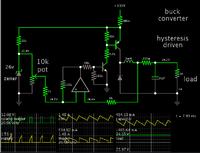emax2
Newbie level 2
I need a design to convert 110V DC to 24V DC for output current of 500mA to 1A.
The cost is also a factor to consider and probably need a discrete design to lower BOM cost.
Can anyone suggest a similar and simple design/schematic for this application?
The cost is also a factor to consider and probably need a discrete design to lower BOM cost.
Can anyone suggest a similar and simple design/schematic for this application?
